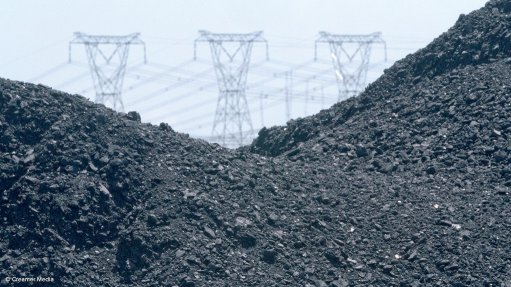Climate change: Part 3
Summary of previous columns: firstly, climate change is real, if only because, in Norway, large patches of ice have melted and given up artefacts. This shows that Norway has become warm enough to melt ice, which has not happened in recent times, and the discovery of the artefacts shows that the ice has melted before.
Secondly, in a survey conducted by the American Meteorological Society, 63% of 1 854 members questioned were convinced that climate change was real and man-made and 38% were unconvinced. Not 97%. Very different statistics.
Thirdly, is climate change man-made ? Those ‘convinced’ say it is all about the carbon dioxide (CO2) in the atmosphere apparently increasing. Is it possible to heat up the Earth’s atmosphere? From 1945 to 1996, a total of 2 476 nuclear devices (as in bombs) released energy equivalent to a 1 353 MW heater running for 53 years. The energy of the sun striking the Earth is about 174 000 000 000 MW, so the energy released by the bombs is very small, compared with the energy from the sun. A heater won’t really work. In 1883, the island of Krakatoa, near Java, blew up. It released an energy equivalent of 200 megatons of TNT equivalent. The explosions hurled an estimated 11 cubic miles (45 km3) of debris into the atmosphere. Within 13 days, a layer of sulphur dioxide and other gases began to filter the amount of sunlight able to reach the Earth. Average global temperatures were as much as 1.2 ºC cooler for the next five years. So, it seems you cannot cook up the atmosphere, but blocking the sun does reduce temperatures. Surprise. Which is global cooling, not warming.
So, where does CO2 fit in? I have researched this and cannot follow the arguments. I have many friends who are highly qualified scientists and they cannot follow either. Our confusion is like this: the atmosphere contains about 50 000 parts per million (ppm) water vapour. If it is a cloudy day, the ground does not get too warm but it also does not get too cold at night. If it is a clear day, the day can be really quite warm and the night pretty cold, aka ‘Johannesburg in winter’.
This is with a 50 000 ppm water concentration. Water comes and goes but CO2 does not. It is just there. But it has a concentration of only 400 ppm, so it has a real way to go to increase to about 40 000 ppm.
So, how can it have any effect? Well . . . I tell you what, let us not worry about if it has an effect or not. Those convinced want CO2 emissions reduced. Let us see where they come from, to begin with. Ahh . . . not so easy. It seems that there are tables which list emissions of greenhouse gases (GHG) (mostly CO2) per country per capita. The figures are estimated, not measured.
There are two methods of accounting: ‘production-based emissions’ and ‘consumption-based emissions’. For production-based emissions, emissions are calculated not directly but indirectly from fossil fuel use and other relevant processes, such as industry and agriculture, according to the International Panel on Climate Change (IPCC). Typically, emissions are from electricity production, road transport, aviation, refrigeration and air conditioning, fertilisers and wastewater handling. And from ‘enteric fermentation’, which is methane produced by ruminant cows. Cows. (The IPCC has let pigs, goats and horses off the hook.)
Turning to consumption-based emissions, I quote from Wikipedia: “Consumption-based emissions accounting displays the interconnection between different sectors of production and allow for a tracing of the production and consumption in an economy.” (If you fall asleep reading this, I’m not surprised.)
So, the matter of CO2 and GHG emissions is all one of estimations. These estimations put the countries with the highest emissions in the following order: China, the US, the European Union (including the UK), India, Russia, Japan and Germany. China gives off 30% of the world’s total emissions and the US about half that. Apart from this list, no other country contributes more than 2% to world total emissions. (Part 4 next week.)
Article Enquiry
Email Article
Save Article
Feedback
To advertise email advertising@creamermedia.co.za or click here
Comments
Press Office
Announcements
What's On
Subscribe to improve your user experience...
Option 1 (equivalent of R125 a month):
Receive a weekly copy of Creamer Media's Engineering News & Mining Weekly magazine
(print copy for those in South Africa and e-magazine for those outside of South Africa)
Receive daily email newsletters
Access to full search results
Access archive of magazine back copies
Access to Projects in Progress
Access to ONE Research Report of your choice in PDF format
Option 2 (equivalent of R375 a month):
All benefits from Option 1
PLUS
Access to Creamer Media's Research Channel Africa for ALL Research Reports, in PDF format, on various industrial and mining sectors
including Electricity; Water; Energy Transition; Hydrogen; Roads, Rail and Ports; Coal; Gold; Platinum; Battery Metals; etc.
Already a subscriber?
Forgotten your password?
Receive weekly copy of Creamer Media's Engineering News & Mining Weekly magazine (print copy for those in South Africa and e-magazine for those outside of South Africa)
➕
Recieve daily email newsletters
➕
Access to full search results
➕
Access archive of magazine back copies
➕
Access to Projects in Progress
➕
Access to ONE Research Report of your choice in PDF format
RESEARCH CHANNEL AFRICA
R4500 (equivalent of R375 a month)
SUBSCRIBEAll benefits from Option 1
➕
Access to Creamer Media's Research Channel Africa for ALL Research Reports on various industrial and mining sectors, in PDF format, including on:
Electricity
➕
Water
➕
Energy Transition
➕
Hydrogen
➕
Roads, Rail and Ports
➕
Coal
➕
Gold
➕
Platinum
➕
Battery Metals
➕
etc.
Receive all benefits from Option 1 or Option 2 delivered to numerous people at your company
➕
Multiple User names and Passwords for simultaneous log-ins
➕
Intranet integration access to all in your organisation


















